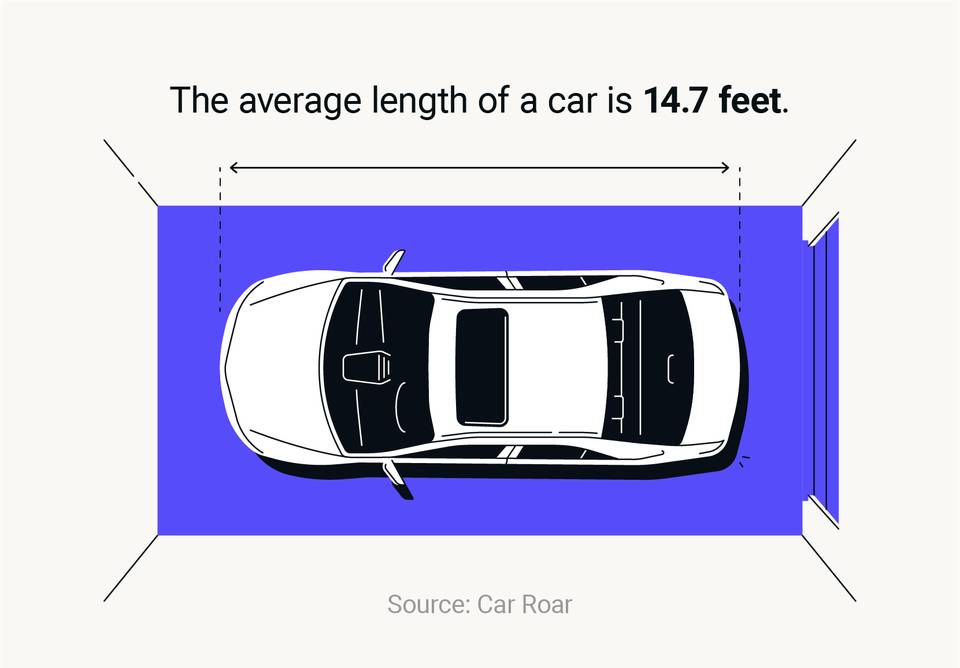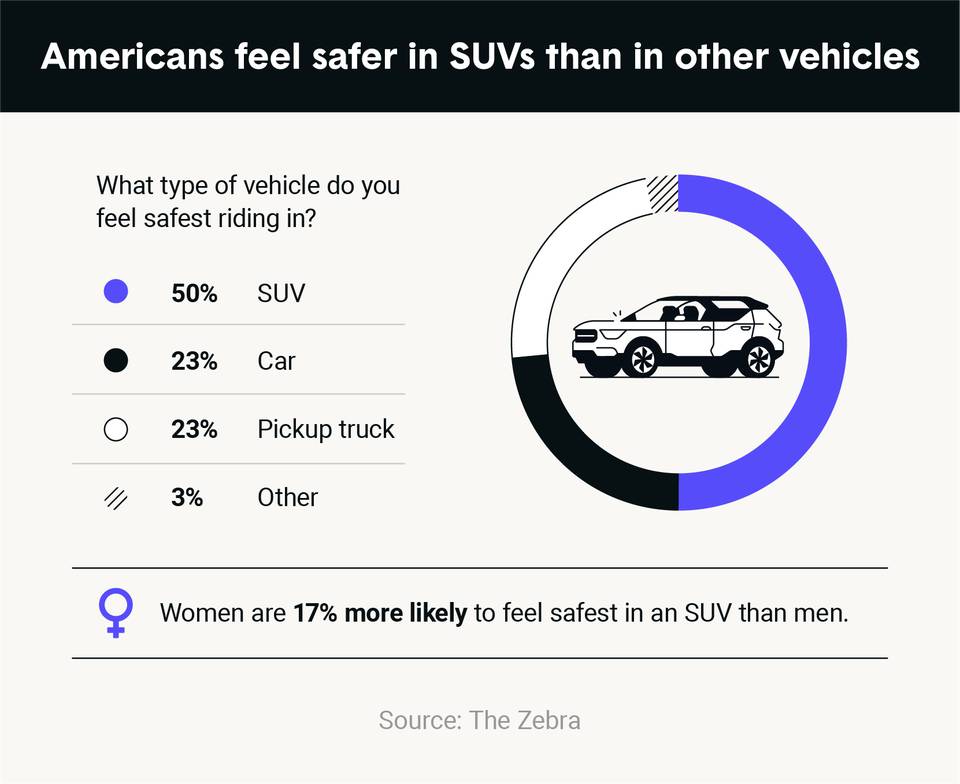Large vehicles dominate U.S. auto showrooms and highways alike. SUVs and crossovers are extremely popular: Together, they command around 50% market share for all passenger vehicles sold in the U.S. Automakers’ decisions to eliminate sedans from their lineups directly reflects this statistic — and may cause disaster for other drivers and pedestrians by putting larger, heavier vehicles on the road.
We surveyed more than 1,500 Americans to determine their feelings on vehicle safety. The results paint a clear picture of the shift in tastes and preferences: Americans staunchly prefer larger vehicles that cost less to insure and make them feel safer overall. We found that:
- Americans feel safest in SUVs compared to other vehicles.
- Women felt 3.5x safer in SUVs than pickup trucks compared to men.
- Men were nearly twice as likely to feel safest in pickup trucks compared to women.
Below, we’ll dig deeper into the story of average car size and how it always seems to be increasing. We’ll also explore our survey findings and discuss whether SUVs pose a threat to pedestrians and drivers of smaller cars, and whether Americans really trust the pickup trucks they drive.
Average car size varies by vehicle type
Many factors lead to design changes that increase a vehicle’s length, width or height. Passenger space and cargo room will add length to a car, while safety features like side airbags and lane departure sensors can stretch a vehicle’s width beyond the size of average parking spaces.








